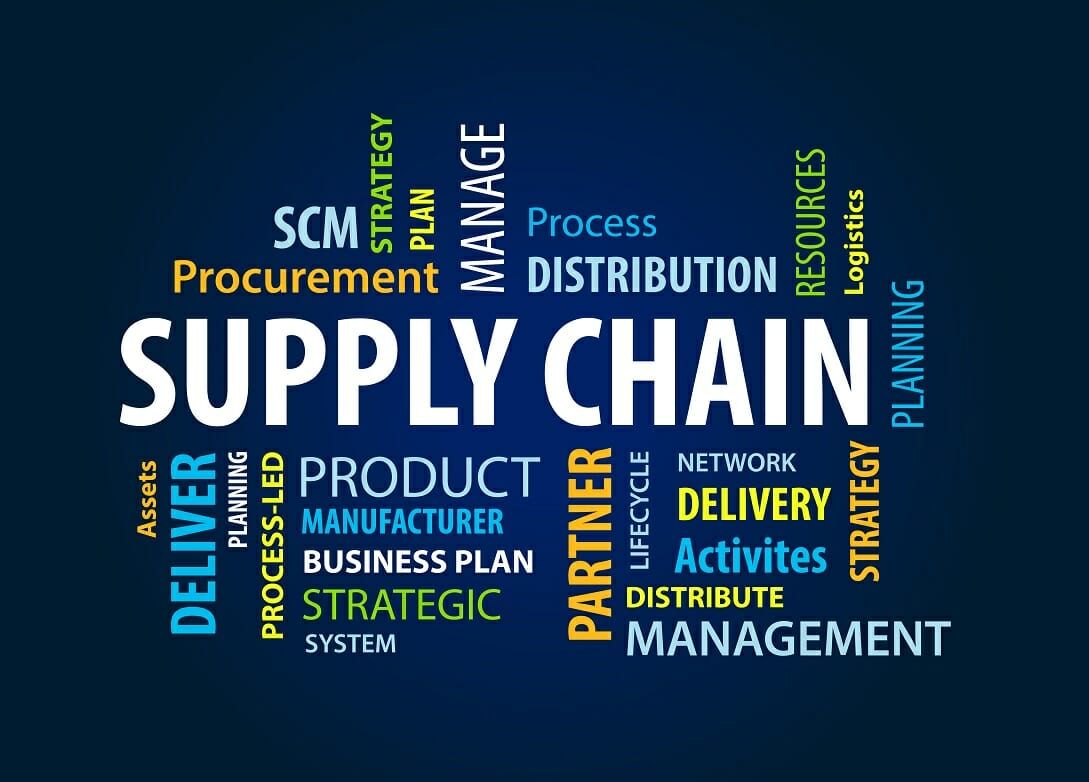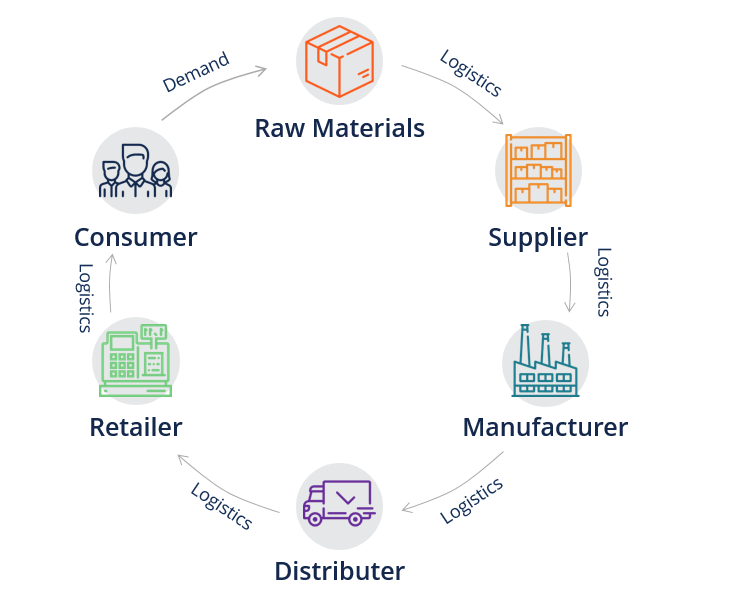Business efficiency is achieved by optimizing supply chains and fostering agility

Business efficiency is achieved by optimizing supply chains and fostering agility.
With the present global problems brought on by conflict, inflation, rising fuel prices, and the possibility of the fourth wave looming on the horizon, global logistics and supply chains are once again confronted with a number of challenges. However, the industry has adapted to meet these difficulties, utilizing technology and lessons learnt from the pandemic to establish the new normal – efficiency and agility!
Thanks to technological adoption and effective resource management, the sector can now rise higher than ever before to meet the current demands of the new business ecosystem, such as e-commerce, no-contact deliveries, reverse logistics, dark stores, and the surge in temperature-controlled storage and transportation.
One of the most important lessons learned from the pandemic has been the importance of readiness and resilience in the face of adversity, and flexible supply chains have been one of the solutions. These efforts, however, would be in vain unless optimisation, as a crucial disruptor, is implemented at the group level!
The following are five essential criteria that can assist logistics and supply chain service providers in streamlining operations and increasing efficiency:

- Optimization of resources: By utilizing new technologies such as AI and Big Data, it is feasible to ensure that resources – both human and capital – are optimally utilized. From determining the shortest routes, enabling efficient last-mile deliveries, and real-time tracking and monitoring of shipments, to better inventory management, staffing and scheduling of warehouse and transport personnel, and more, tech adoption can help increase productivity and efficiency while lowering costs.
- Consolidation of shipments: For both interstate and international shipments, using route optimization and real-time tracking, as well as consolidation of shipments, may go a long way toward lowering costs and assuring the timely and efficient flow of products. This is especially true for cargo that requires specialized transportation conditions, such as regulated temperatures, since this may significantly save time, costs, and operations.
- Regional hubs: The regionalization of national/state level logistics hubs is one of the most important features of an agile and optimized supply chain network. The supply chain will be more stable if the regional network is larger. The present government mandate to construct Logistic Parks near ports and airports is a significant step forward in this direction. However, individual efforts by enterprises and logistics service providers to expand access to localized storage and supply chain hubs to improve reach and supply must be complemented.
- Employing a local workforce with flexible shifts, such as work from home or remote working options for office staff, can be critical to ensuring business continuity and operational efficiency because it reduces attrition while ensuring trained staff continues to work and grow with the company, helping to build agility while building a skilled and stable workforce.
- Effective demand and supply planning is one of the most important aspects of a supply chain. When constructing successful agile supply chains, one must consider changing customer demands, re-evaluate potential supply loads and constraints, and plan for a contingency by utilizing effective warehouse infrastructure. By ensuring that goods are moved in a well-planned and strategic manner and that localized warehouses are prepared to provide easy access to the market, one may help alleviate any demand-supply crises, therefore maintaining a robust and adaptable network.
Even as the globe grapples with continuous issues, logistics and supply chains are fast developing to not only solve current circumstances but also to rise to the occasion and be ready for future crises. Needless to say, tech adoption is at the heart of these rapid changes, and while AI, machine learning, blockchain, and big data are all revolutionizing the industry, it is a fundamental shift in operations that will eventually aid in the creation of resilient, flexible supply chains in the future.
Lessons from the RCF-2022 Report on Currency and Finance

Curiosity is centred on the economy’s recovery, with the pandemic on track to fade into an endemic, the pandemic’s last form of dissipation. With the sigh of relief that came with its abatement, the geopolitical storm generated by the ongoing extended Russia-Ukraine war is once again posing a serious threat.
Inflationary headwinds, capital flight from the US and many other western economies, policy rate hikes, interest rate hardening to combat inflation, factoring rising input costs and supply-side disruptions of import-dependent components, and a slew of other debilitating threats all added to the uncertainty and risks.
In this highly volatile and uncertain business environment, the Report on Currency and Finance – 2021-22 (RCF22) has provided deep insights based on first-hand experience with the pandemic, research, and empirical analysis on the mechanics of how the economy suffered and how it may evolve, as well as a path forward highlighting its interlinkages while taking foreseeable factors into account. ‘Revive and Reconstruct’ is the RCF22 theme.
Using RCF22 as a guide, market players and other stakeholders may rethink their company strategies/approaches and establish long-term prudential policies to effectively mitigate risks and release economic potential, assisting in the recovery and acceleration of growth.
- Deeper impact of Pandemic:
RCF22 emphasized the deep-rooted degradation of societal entrepreneurial aptitude that has yet to be defined and may not even be measurable, a portion of which may be a permanent handicap, while the remainder may recover normality over a longer time horizon. Bankruptcies, the closure of some units, the depletion of capacity, the loss of life and livelihood, the rise in poverty levels, the loss of employment, and many other debilitating factors that may not be reflected in the data system may go unnoticed but may lead to supply-side disruptions that negatively impact total factor productivity (TFP).
Using the two-year pandemic period as a guide, the business sector deleveraged and cut its balance sheets with more liquid assets, but this dampened enthusiasm for capacity development and investment restoration.
The halting of innovation and product development will have a long-term negative impact on the economy. It will be difficult to set the economy on a high growth trajectory to make up for the deeper losses incurred during the epidemic and its aftermath unless a virtuous cycle of rejuvenation, innovation, and investment is formed.
Consumer demand was depleted as a result of this, as well as a decrease in demand for non-essential commodities by the home sector. The inclination of consumers to flee to safety owing to increased health-care costs hampered investment appetite and hindered the rebound Capex cycle. Consumption demand and capital quality have been harmed by broken household balance sheets and labour displaced from contact-intensive work. However, the household economy is as resilient as other sectors of the economy.
- Macroeconomic dynamics:
GDP plummeted to -6.6 per cent in FY21 due to pandemic stress, rebounded to 8.9 per cent in FY22, and assuming 7.2 per cent growth in FY23 and 7.5 per cent after that, it may endure until 2034-35 when the economy is poised to completely remove the pandemic scare.
In the medium run, the comeback will demand non-disruptive absorption of the system’s surplus liquidity overhang. Because it has been observed that every percentage point rise in excess liquidity beyond 1.5 per cent of NDTL results in a 60 basis point increase in yearly average inflation. In its most recent monetary policy review on April 8, the Reserve Bank of India (RBI) assessed excess liquidity at Rs.8.5 trillion.
It will have to be absorbed with the use of the liquidity adjustment facility’s instruments (LAF). The Reserve Bank of India (RBI) has created the Standing Deposit Facility (SDF), a new instrument for absorbing overnight liquidity or longer-term liquidity without releasing government securities. Furthermore, by modifying the tone of the policy connected to inflation developments, the monetary policy prioritized price stability as the nominal anchor for the future economic trajectory.
RCF22 also noted that once general government debt surpasses a threshold of 66 per cent of GDP, growth will be jeopardized. India’s debt to GDP ratio was 74 per cent in 2019, a bit higher than the trigger threshold even before the epidemic, according to the IMF.

It is currently expected to have risen to about 90% due to a widening budget deficit as a result of increased pandemic-related spending, as well as increased health and vaccine spending.
Even with the greatest conceivable macroeconomic results, RCF22 estimates that general government debt will not fall below 75% of GDP in the next five years. If the worst-case scenario plays out, debt might end up hovering around 90% of GDP for the rest of the year. To safeguard India’s medium-term economic prospects, a medium-term debt consolidation plan aiming at decreasing debt to below 66% of GDP over the next five years is critical. As the economy improves, the debt-to-GDP ratio is likely to decrease progressively.
Privatisation and asset monetisation, tax changes (GST and corporate tax rationalisation), and targeted sector-specific incentives to boost output and exports under the production-linked incentive (PLI) programme are among the measures already underway. Adopting a fiscal policy that prioritizes capital expenditures and infrastructure can help to resuscitate the economy.
As a technological hub, India is establishing itself as a centre for nurturing start-ups and unicorns, as well as the transformation of ideas into companies. It will provide a conducive climate for unicorns and start-ups to grow. Many funding options have opened up, and venture capitalists are looking for innovative ways to mould fresh ideas and drive entrepreneurship. Most states have implemented the RERA framework, which encourages urban agglomerations by increasing housing and physical infrastructure.
- Steps to take:
However, the economy navigating over such a long time horizon of up to a decade or more may have to face additional hazards along the road. It will need long-term policy execution and a united front to face the problems. Despite external sector constraints and skyrocketing energy costs, an enabling environment is established by regulators and the government working closely with market players to speed the recovery. The vaccination campaign has been a watershed moment.
As of April 3, 2022, 91 per cent of the population has received at least one dose of vaccination, setting a new standard. A total of 1.8 billion doses of the presently licensed vaccinations have been provided, including first, second, and precautionary (booster) doses. In India, 91% of the eligible population (12+) has had at least one vaccination, and 77% of the eligible population (12+) has been completely immunized.
This has produced a favourable environment for the economy to function normally, with market players looking for ways to maximize their potential. The economic intelligence offered by RBI through RCF22 will go a long way toward constructing a robust strategic framework that might potentially speed the restoration and long-term growth of the economy if other reinforcing criteria come into place.
edited and proofread by nikita sharma




